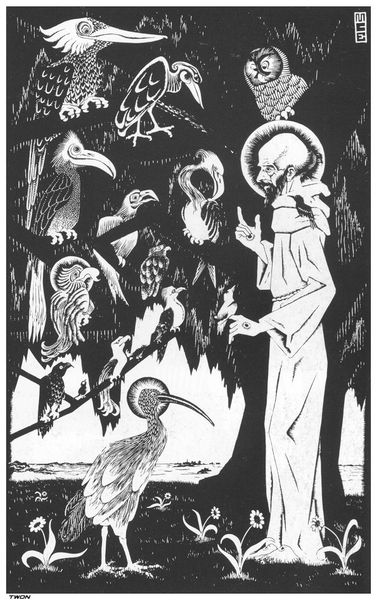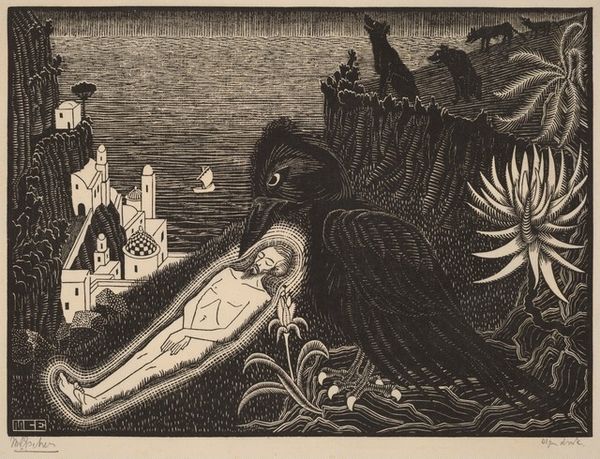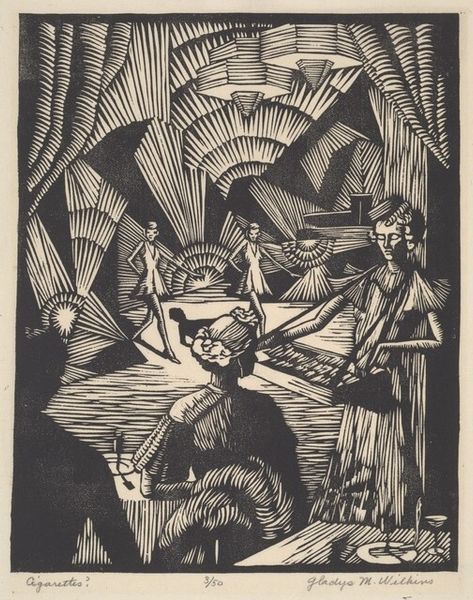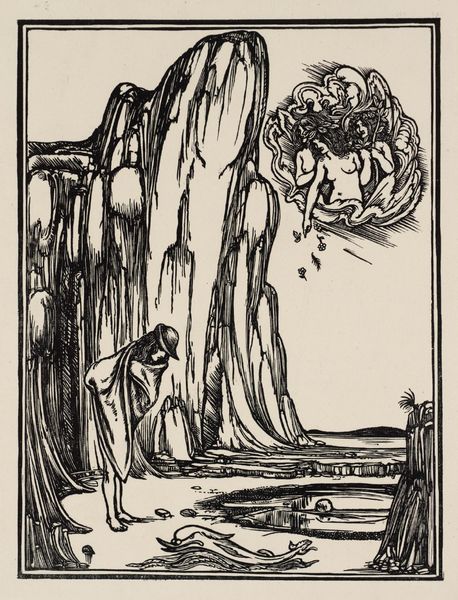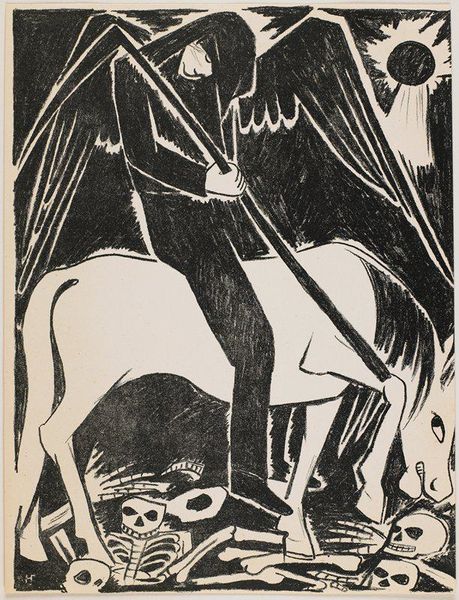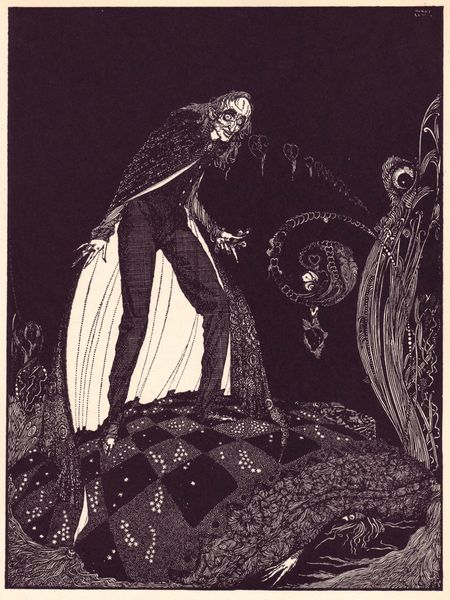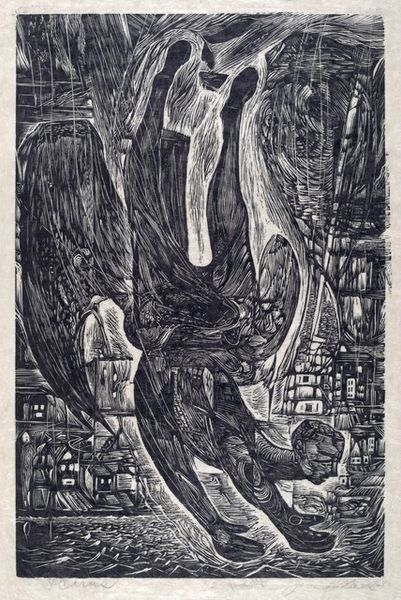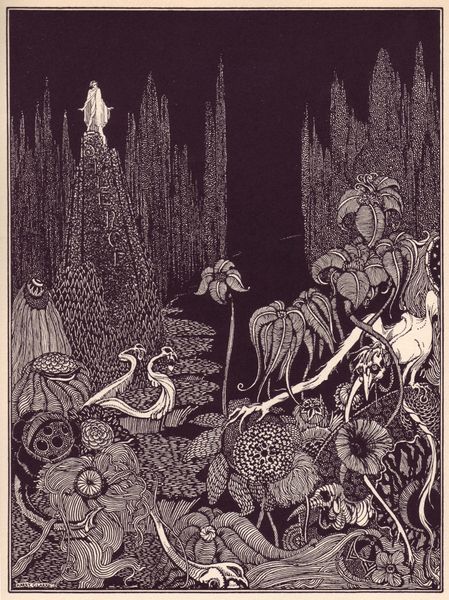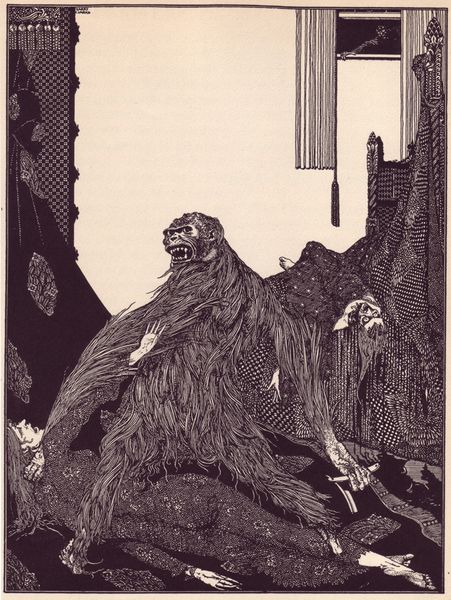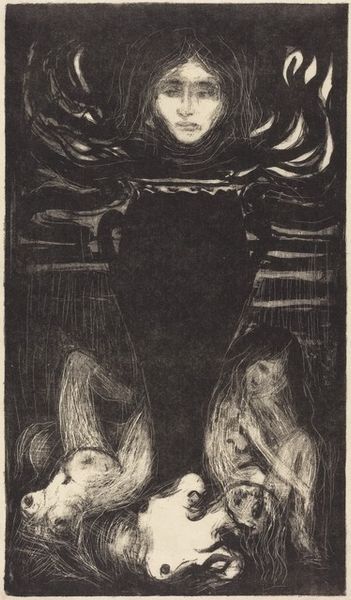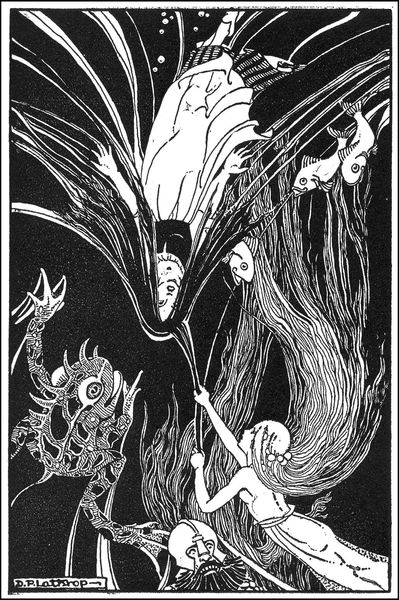
print, woodcut
#
narrative-art
# print
#
landscape
#
figuration
#
woodcut
#
line
#
northern-renaissance
#
monochrome
Copyright: National Gallery of Art: CC0 1.0
Editor: This is M.C. Escher's "Saint Francis," a woodcut print from 1922. I'm struck by how graphic it is, the stark contrast between the black and white, and all the different birds! What's your take on this, in terms of how it relates to its context? Curator: It’s fascinating to consider this through the lens of early 20th-century social currents and the revival of the woodcut tradition. We have this almost medieval subject matter, Saint Francis preaching to the birds. But rendered in this deliberately rough, almost primitive style – think about the German Expressionists' engagement with similar media for its directness and connection to ‘authentic’ folk traditions, it shows this tension in modernism and looking at social reforms within religion. How does the combination of subject and style strike you? Editor: Well, it’s not what I expect from Escher. I associate him with mathematically inspired, infinitely repeating patterns, but this feels different, like it's reaching for something older. It’s got religious context that gives that mood a particular grounding, one where society has been deeply changed. Curator: Exactly. The choice of Saint Francis, a figure known for his renunciation of worldly goods and connection with nature, reflects anxieties of the time with overconsumption as the Church loses social authority. By presenting Francis so front-and-center amongst what is presumably nature, and setting them together so simply, is this a presentation on the changing dynamics in Dutch society, perhaps even the rising presence of socialist sentiment. Also, consider the symbolism of birds in the early 20th century – representing freedom, spirituality, escape – often connected to social mobility at the expense of the existing establishment. This contrasts sharply with the commercial rise in society at the same time. What does this tell us? Editor: I see now. So, it's less about simple religious devotion and more about the way social ideals connect back to our culture? Curator: Precisely. The print asks us to consider what values our society should embrace amidst all this turbulence and who these values are accountable too, and the historical narrative Escher is choosing to engage to help guide the viewer there. I hadn’t thought of it that way before. Editor: This makes me view Escher, and the societal pressures on even artists like him in this period in history, in a whole new way. Thank you!
Comments
No comments
Be the first to comment and join the conversation on the ultimate creative platform.
